Exam Details
Exam Code
:ACCP-V6.2Exam Name
:Aruba Certified Clearpass Professional v6.2Certification
:Aruba CertificationsVendor
:ArubaTotal Questions
:140 Q&AsLast Updated
:Jun 22, 2025
Aruba Aruba Certifications ACCP-V6.2 Questions & Answers
-
Question 51:
Refer to the screenshot below:
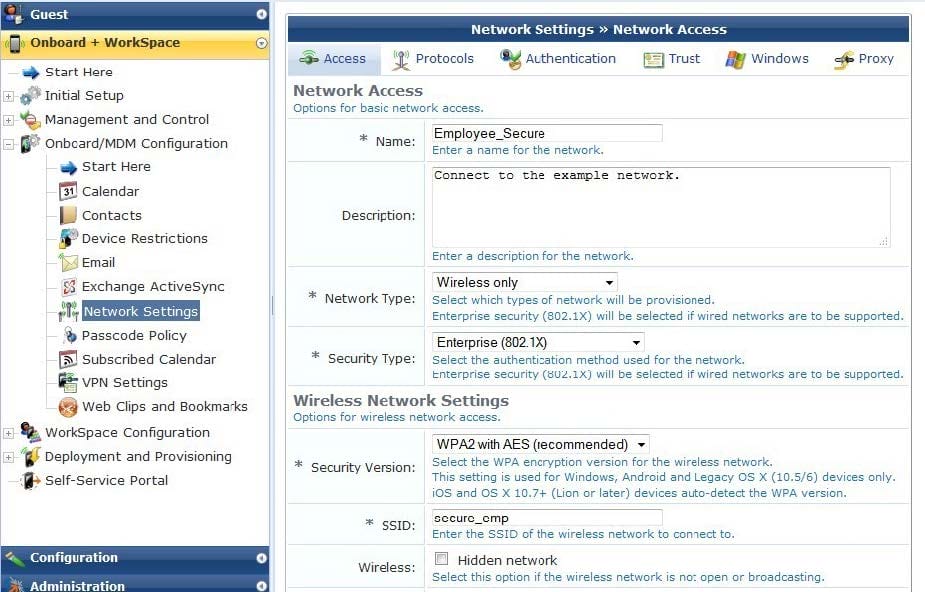
Which of the following statements is true regarding the above configuration for network settings? (Choose 2)
A. Onboarded devices will connect to Employee_Secure SSID after provisioning.
B. Onboarded devices will connect to secure_emp SSID after provisioning.
C. Users will connect to Employee_Secure SSID for provisioning their devices.
D. Users must enter a Pre-shared key to connect to the network.
E. Users will do 802.1X authentication when connecting to the SSID.
-
Question 52:
Refer to the screenshot below:
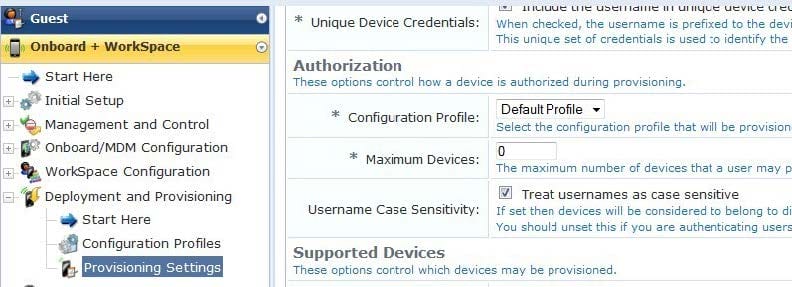
Which of the following statements is correct regarding the above configuration for 'maximum devices'?
A. It limits the total number of Onboarded devices connected to the network.
B. It limits the total number of devices that can be provisioned by ClearPass.
C. It limits the number of devices that a single user can Onboard.
D. It limits the number of devices that a single user can connect to the network.
E. With this setting, the user cannot Onboard any devices.
-
Question 53:
An Android device goes through the single-ssid onboarding process and successfully connects using EAPTLS to the secure network. What is the order in which services are triggered?
A. Onboard Provisioning, Onboard Authorization
B. Onboard Provisioning, Onboard Authorization, Onboard Provisioning
C. Onboard Authorization, Onboard Provisioning
D. Onboard Authorization, Onboard Provisioning, Onboard Authorization
E. Onboard Provisioning
-
Question 54:
Which of the following is TRUE of dual-SSID onboarding?
A. The device connects to the secure SSID for provisioning
B. The Onboard Authorization service is triggered when the user connects to the secure SSID
C. The Onboard Provisioning service is triggered when the user connects to the Provisioning SSID
D. The Onboard Authorization service is triggered during the Onboarding process
E. The Onboard Authorization service is never triggered
-
Question 55:
Refer to the screenshot below: Which of the following statements is correct regarding the above configuration for the private key? (Choose 2)
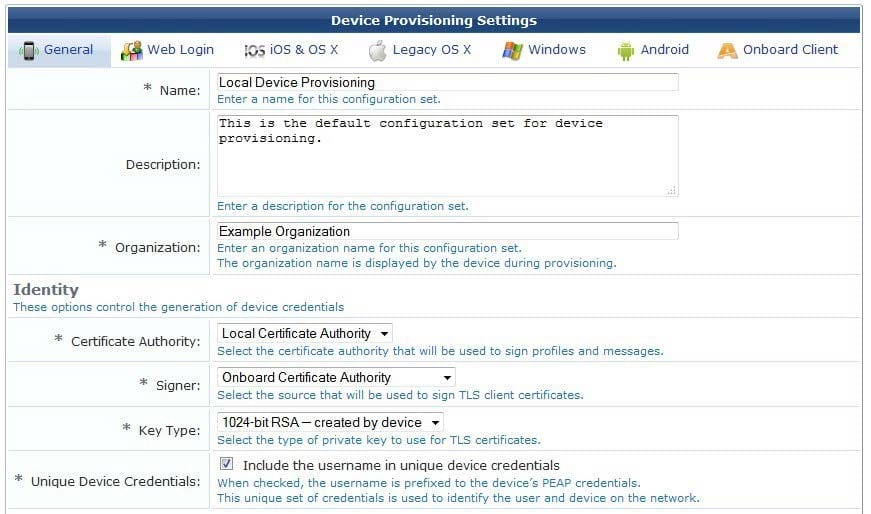
A. The private key is stored in the user device.
B. The private key is stored in the ClearPass server.
C. More bits in the private key will reduce security, hence smallest private key size is used.
D. More bits in the private key will increase the processing time, hence smallest private key size is used.
E. The private key for TLS client certificates is not created.
-
Question 56:
Refer to the screen capture below: An employee connects a corporate laptop to the network and authenticates for the first time using EAPTLS. Based on the above Enforcement Policy configuration, what Enforcement Profile will be sent in this scenario?
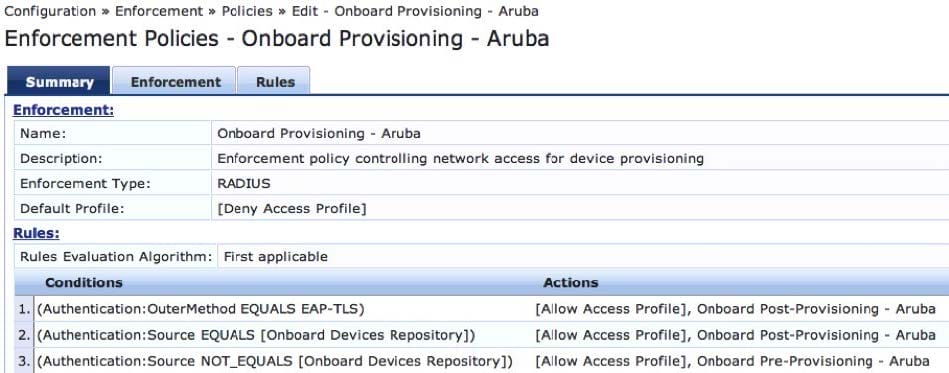
A. Deny Access Profile
B. Onboard Post-Provisioning - Aruba
C. Onboard Pre-Provisioning Aruba
D. Cannot be determined
E. Onboard Device Repository
-
Question 57:
Refer to the screenshot below: This authentication method is applied to a service processing EAP-TLS authentications. Which of the following is FALSE?
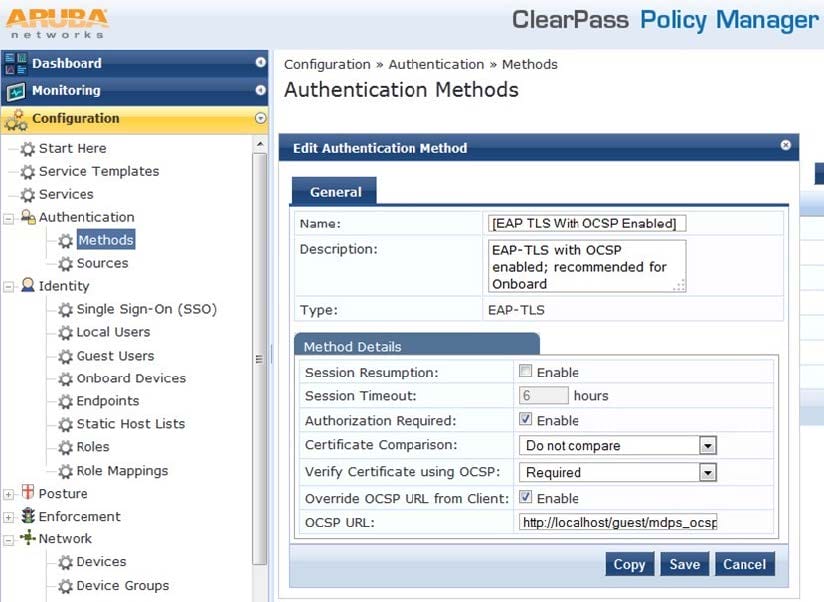
A. Devices with revoked certificates will not be allowed access
B. Devices with deleted certificates will not be allowed access
C. Devices will perform OCSP check to their laptop's localhost OCSP server
D. Devices will perform OCSP check with Clearpass
-
Question 58:
What is the certificate format PKCS #7, or .p7b, used for?
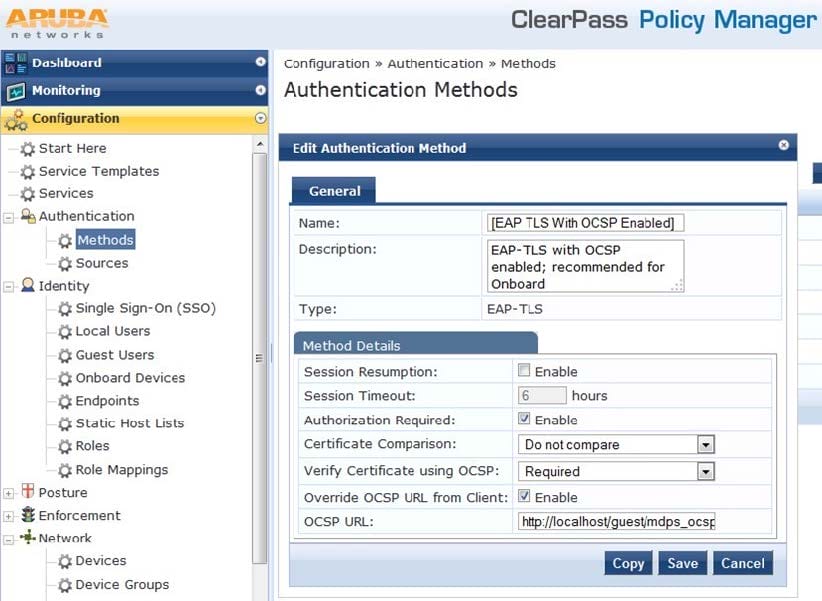
A. Certificate chain
B. Certificate Signing Request
C. Certificate with an encrypted private key
D. Binary encoded X.509 certificate
E. Binary encoded X.509 certificate with public key
-
Question 59:
Which of the following statements is true about Certificate Authorities in ClearPass Onboard?
A. ClearPass cannot operate as a root CA.
B. The root CA needs to be connected to the network to perform CRL checks.
C. ClearPass Onboard CA is always configured as an Intermediate CA that is part of an Enterprise PKI.
D. ClearPass Onboard CA can operate either as a root CA, or as an Intermediate CA.
E. Clearpass cannot operate as an intermediate CA.
-
Question 60:
Refer to the screenshot below: Based on the above configuration, which of the following statements is true?
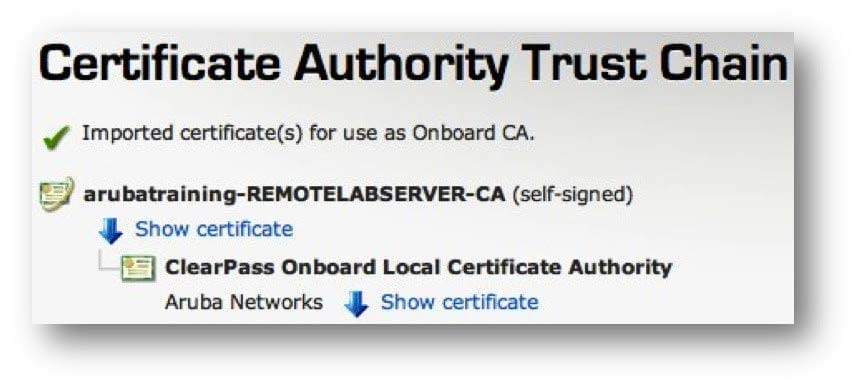
A. ClearPass is configured as a Root CA.
B. ClearPass is configured as the Intermediate CA.
C. ClearPass has an expired server certificate.
D. The arubatraining-REMOTELABSERVER-CA will issue client certificates during Onboarding.
E. This is not a valid trust chain since the arubatraining-REMOTELABSERVER-CA has a self- signed certificate.
Tips on How to Prepare for the Exams
Nowadays, the certification exams become more and more important and required by more and more enterprises when applying for a job. But how to prepare for the exam effectively? How to prepare for the exam in a short time with less efforts? How to get a ideal result and how to find the most reliable resources? Here on Vcedump.com, you will find all the answers. Vcedump.com provide not only Aruba exam questions, answers and explanations but also complete assistance on your exam preparation and certification application. If you are confused on your ACCP-V6.2 exam preparations and Aruba certification application, do not hesitate to visit our Vcedump.com to find your solutions here.